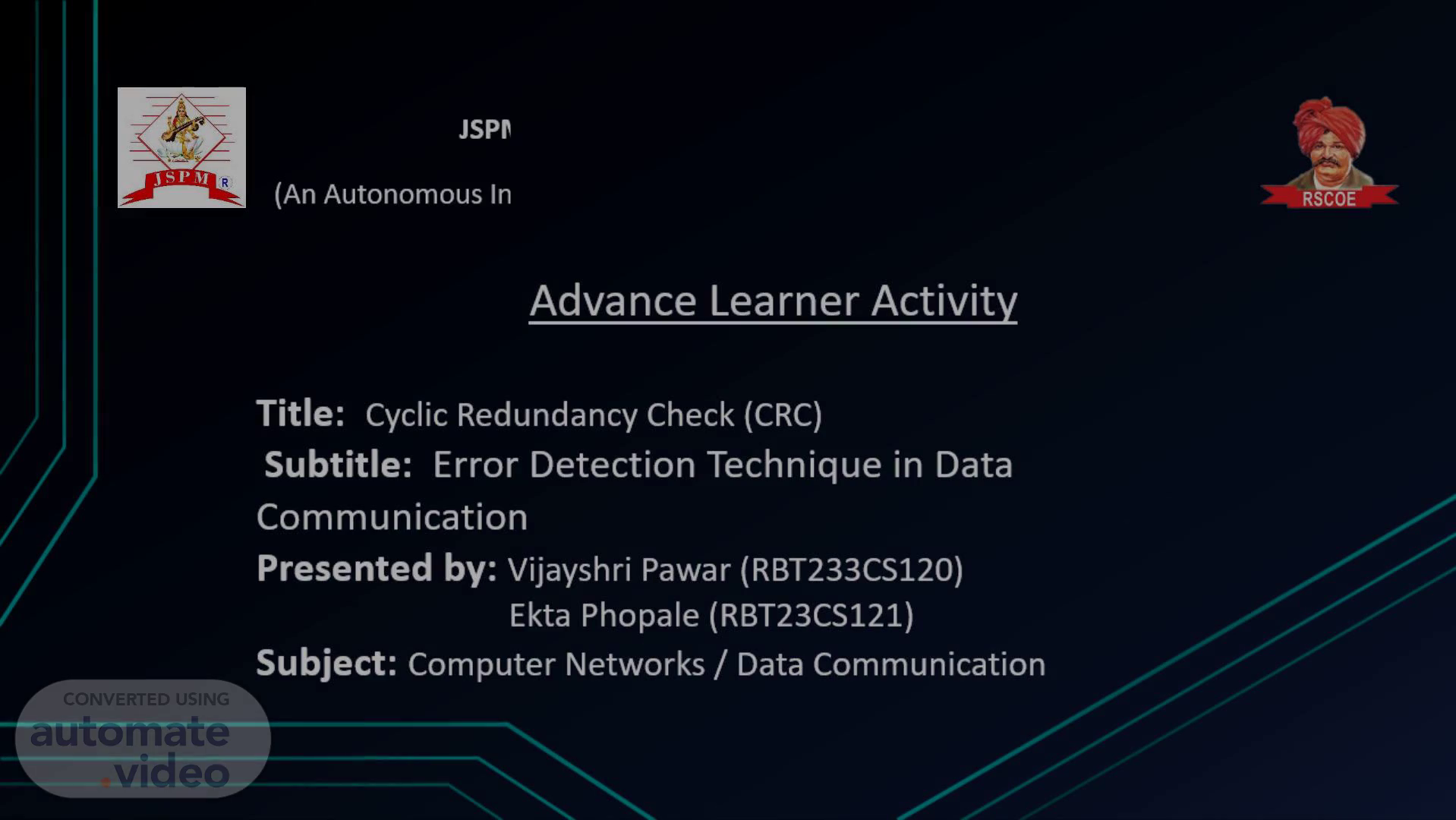
JSPM's Rajarshi Shahu College of Engineering - PUNE - 411033 (An Autonomous Institute Affiliated to Savitribai Phule Pune University, Pune)
Scene 1 (0s)
JSPM’s Rajarshi Shahu College of Engineering - PUNE - 411033 (An Autonomous Institute Affiliated to Savitribai Phule Pune University, Pune).
Scene 2 (16s)
Introduction CRC stands for Cyclic Redundancy Check. It is an error-detecting code used in digital networks and storage devices. Helps to detect accidental changes in raw data during transmission. Works by dividing data into blocks and checking integrity using a polynomial..
Scene 3 (31s)
Basic Working Principle Sender generates a CRC code (remainder) using a predefined polynomial. 2.The CRC code is appended to the data and sent. 3.Receiver divides received bits by the same polynomial. 4.If the remainder is zero, no error is detected; otherwise, an error occurred. Example: Data = 1101, Generator = 1011.
Scene 4 (50s)
CRC Generation Process Steps: Append zeros (equal to polynomial degree) to data. 2.Perform binary division (XOR) using generator polynomial. 3.Remainder = CRC bits. 4.Transmit (Data + CRC). 🧠 CRC ensures high accuracy in error detection..
Scene 5 (1m 6s)
Advantages & Limitations Advantages: Detects single-bit and burst errors effectively. Simple and fast to implement in hardware. Used in Ethernet, USB, disks, and networks. Limitations: Cannot correct errors (only detect). Some rare error patterns may go undetected..
Scene 6 (1m 21s)
Conclusion CRC is a powerful and reliable error detection method. Ensures data integrity in communication systems. Widely used due to its simplicity and effectiveness. “CRC helps keep our data transmission safe and accurate!”.